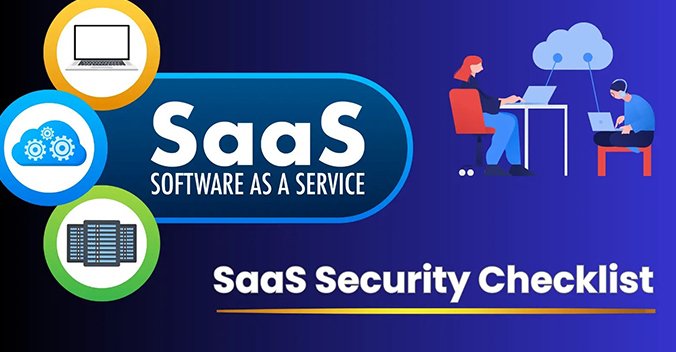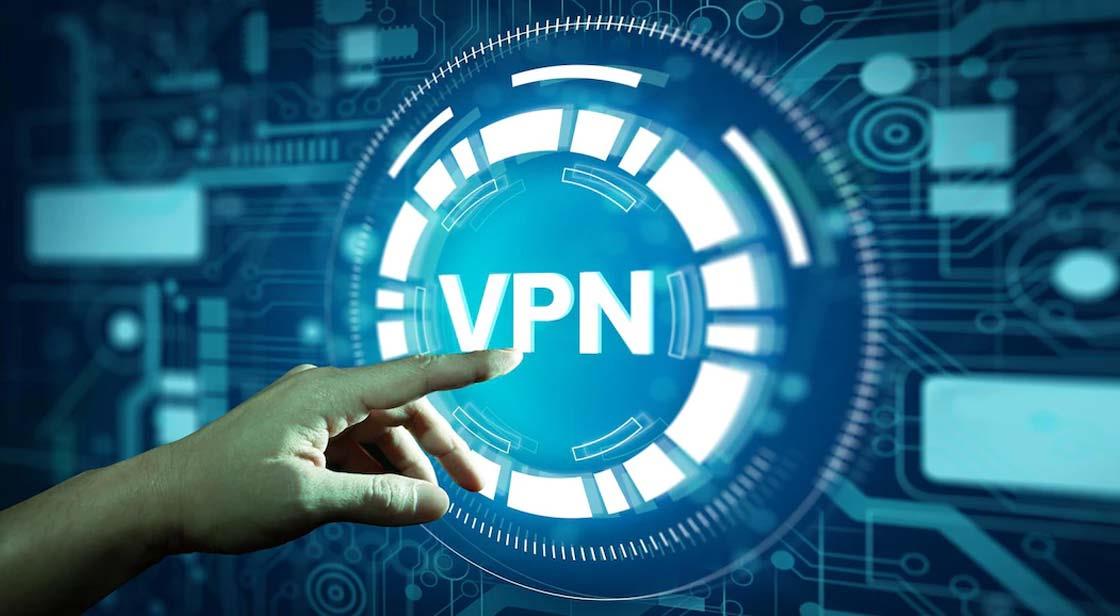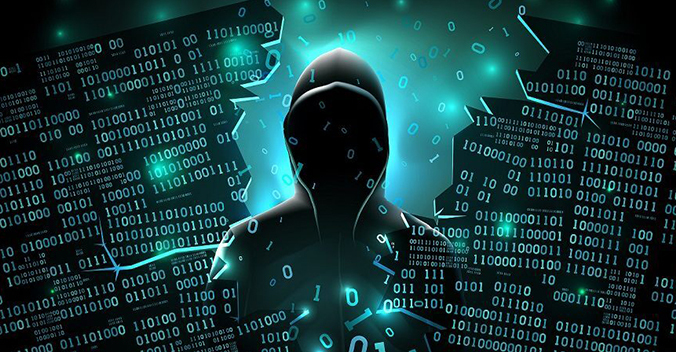Software as a Service (SaaS) security pertains to the measures and practices implemented to safeguard the data, applications, and infrastructure of SaaS solutions. Additionally, SaaS represents a cloud computing model wherein software applications are hosted and delivered through the internet, rather than being installed and operated on individual devices or servers.
While SaaS presents various advantages, such as scalability and accessibility, it also presents security complexities that organizations must address to protect their data and ensure compliance with regulatory requirements.
Under this framework, the software is centrally hosted, with the service provider assuming responsibility for tasks ranging from database management to network administration, availability checks, and infrastructure maintenance. Data is commonly stored in centralized servers situated across numerous data centers and accessed by users through a web interface.
SaaS, or Software as a Service, commonly utilizes a deployment model called multi-tenancy, wherein a singular software instance caters to numerous customers with isolated data and settings. This architecture incorporates virtualization, load balancing, and backup storage as part of its strategy to provide scalable, reliable, and readily accessible software solutions upon request.
By adhering to the SaaS security checklist, one can gain a comprehensive understanding of potential blind spots and prioritize the security of SaaS applications and data.
Why SaaS Security is necessary?
The importance of SaaS security stems from the fact that these applications frequently handle sensitive data, ranging from personal information to confidential corporate details. This necessitates the need for robust security measures.
As SaaS applications operate through the internet, they become susceptible to data theft and denial-of-service attacks. The consequences of a compromised SaaS service can include data loss, financial ramifications, legal complications, and damage to reputation.
Furthermore, given the shared infrastructure of SaaS, a single vulnerability can impact multiple users. As such, ensuring strong security protocols becomes crucial in mitigating potential risks.
Furthermore, while conveniently advantageous, malevolent individuals can easily exploit Software as a Service (SaaS) on account of its reliance on centralized data storage. The implementation of robust security measures for SaaS is imperative to safeguard users and instill confidence in the broader digital economy.
Moreover, it is important to note that adherence to legal requirements is imperative for numerous businesses. Consequently, SaaS providers must prioritize security to maintain their credibility, protect customers, and ensure uninterrupted operational activities.
The cloud-based and collaborative nature of SaaS raises profound concerns and potential risks in terms of security.
SaaS Security Checklist – Challenges and Risks
The risk of a data breach is significant due to the vulnerability of SaaS services stemming from centralized storage practices. Inadequate segregation of clients within the multi-tenancy framework may result in data leakage. Insufficient access restrictions and reliance on third-party infrastructure can lead to data breaches, necessitating reliance on their safety protocols.
The presence of uncertain Application Programming Interfaces (APIs) within SaaS systems can make them vulnerable to cyberattacks if not sufficiently secured. With the increasing prevalence of off-site data storage, often in different countries, ensuring ongoing compliance with regulatory standards becomes a formidable task.
Top SaaS Security Checklist for 2024
- Deployment of a Reliable SaaS Security Vendor
- Data Encryption
- Conduct Regular and Thorough Security Audits
- Implement Multi-factor Authentication (MFA) for Enhanced User
- Confirm the stringent identity and access management rules
- Implement Comprehensive Data Backups and Disaster Recovery
- Adopt secure application development practices.
- Endpoint Security
- Training and Awareness
- Monitor and Alert
Implement Reliable SaaS Security Solutions
DoControl, a leading SaaS security vendor, offers a comprehensive SaaS Security Platform (SSP) that effectively safeguards business-critical applications and data. This platform is characterized by its unified approach, automatic functionality, and risk awareness.
By partnering with DoControl, businesses can significantly mitigate risk, prevent data breaches, and effectively address internal threats without impeding business operations. Companies of all sizes routinely rely on DoControl to secure their most sensitive SaaS applications and data.
Through OAuth, DoControl compiles a comprehensive inventory of authorized and unauthorized SaaS applications, users, external collaborators, assets, third-party websites, and more.
This platform offers complete visibility and access to pertinent data for security audits, off-boarding suppliers, ensuring compliance, and promptly responding to incidents.
Brief Features
Unified Data Access Controls: DoControl utilizes a centralized system to regulate access to all data within your SaaS applications, ensuring comprehensive oversight. Moreover, it automatically triggers an automated Workflow in case of high-risk actions or events within the SaaS environment.
Data Loss Prevention in SaaS Ecosystems
Our innovative solution continuously scans and instantly recognizes sensitive data categories, such as Personally Identifiable Information (PII), Payment Card Industry (PCI) data, and Protected Health Information (PHI), in all files stored within SaaS services.
Cloud Access Security Broker (CASB)
Immerse yourself in a comprehensive exploration of the SaaS attack surface, evaluate leading threat models, efficiently address vulnerabilities in bulk, and automate this entire process for enhanced security.
SaaS-to-SaaS Protection
DoControl diligently scans and monitors critical SaaS application data activities, employing advanced end-user behavioral analytics to proactively mitigate insider threats. Additionally, it initiates secure procedures automatically to safeguard valuable enterprise data.
Incident Response
Gain full visibility into all integrated SaaS applications, identify non-compliant ones, and assign them a risk score for informed decision-making regarding authorization or denial of access to these applications.
Data Encryption
Data encryption plays a pivotal role in maintaining the security of SaaS data by converting it into an indecipherable code, rendering it inaccessible to unauthorized individuals. This encryption technique can be employed both during data storage, such as in databases or files, as well as during data transmission across networks.
In addition, to ensure a vigorous encryption system, it is crucial to protect encryption keys and employ strong encryption algorithms. These practices act as vital safeguards against potential data breaches and leaks, effectively safeguarding critical information within SaaS environments. In addition, to prevent unlawful decryption, exact data management practices must be implemented.
Brief Features
- Implement encryption for data both during transit and at rest.
- Enforce access controls and the principle of least privilege to restrict unauthorized access to data.
- Conduct regular audits and reviews of user access to data to maintain accountability.
- Utilize data loss prevention (DLP) tools to mitigate the risk of unauthorized sharing of sensitive information.
- By sticking to these formal guidelines, organizations can establish a robust security framework, ensuring the confidentiality and integrity of SaaS data.
Regular Security Audits
Regular security audits are an essential component of best practices for ensuring the security of a Software as a Service (SaaS) application. These audits are conducted systematically and regularly to assess the security posture of the SaaS application. The objective of these audits is to identify and rectify any vulnerabilities present in the system software, hardware, or operational processes, as well as any violations of regulatory standards.
Additionally, to guarantee the integrity and protection of the SaaS service, it is imperative to maintain a robust firewall that can effectively prevent cyberattacks. Typically, these audits are carried out by external organizations or internal security departments, whose main responsibility is to evaluate the system safety. Through this process, any errors or weaknesses can be identified, risks can be minimized, and security can be reinforced through thorough assessment, testing, and analysis of the system.
Regular audits play a critical role in maintaining ongoing security awareness in SaaS environments, particularly considering the ever-evolving landscape of cyber threats.
Short Features
- It is essential to adhere to your business specific rules, such as GDPR, HIPAA, and PCI DSS.
- Maintain a comprehensive record of audits and compliance reports. Additionally, follow guidelines regarding the retention period for data and its proper disposal.
Enforcement of Strong Authentication Measures
The implementation of multi-factor authentication (MFA), a recommended security practice within the realm of Software as a Service (SaaS), entails the utilization of various authentication factors to ascertain the identity of a user.
Moreover, to validate the authenticity of a user, multi-factor authentication (MFA) encompasses the use of knowledge factors such as passwords, possession factors such as security tokens or smartphone apps, or identification factors such as fingerprint or facial recognition.
The utilization of MFA significantly diminishes the risk of unauthorized access, even if an attacker gains access to one of the authentication elements. This is accomplished by implementing multiple layers of authentication.
In SaaS environments, the implementation of multi-factor authentication (MFA) is indispensable as it fortifies security and prevents unauthorized access to systems resulting from compromised credentials.
Short Features
- Employ robust and multi-factor authentication (MFA) for all users.
- Use role-based access control (RBAC) to effectively manage user permissions.
- Promptly deactivate accounts that are not in use.
- Regularly review and modify user access privileges.
Establishing Identity and Access Management Guidelines
The term "Identity and Access Management" (IAM) is utilized to delineate a set of protocols aimed at regulating the authorized individuals who may gain access to specific data within a SaaS (Software as a Service) framework.
Identity and access management (IAM) encompasses a comprehensive range of features, including user authentication, role-based access control, and auditing. However, IAM policies that precisely define access privileges and their associated circumstances serve as the foundation for governing access to applications, data, or functionalities within a SaaS environment.
By implementing stringent IAM regulations that enable enterprises to manage user access based on roles, responsibilities, and business requirements, the potential risks of unauthorized entry or inadvertent data breaches can be mitigated.
In the event of an appropriate deployment of IAM, solely authenticated and authorized users are granted access to the resources offered by a SaaS platform.
Short Features
- Employ a meticulously controlled identity and access management (IAM) system.
- Streamline the process of adding and removing users through automation. Establish a single sign-on (SSO) mechanism to facilitate seamless entry. Educate individuals on the paramount importance of employing robust and unique passwords.
Data Backup and Disaster Recovery
When discussing Software as a Service (SaaS) security practices, terms such as "data backup" and "disaster recovery" describe measures taken to prevent data loss, corruption, or interruption. often used to. Failure to prevent an emergency.
Data backup allows you to quickly restore critical information after a system failure or cyber-attack. However, a disaster recovery plan provides a thorough strategy for restarting operations after a major disruption, including B. Failover to a secondary system.
In a SaaS environment, the combination of these technologies provides a critical first line of defense for protecting an organization integrity and the trust of its constituents.
Brief Features
- Assure regular automatic backups of SaaS data.
- Test the data recovery process to ensure data integrity.
- Keep a disaster recovery plan for SaaS application failures.
Secure Application Development
Building Secure Software-as-a-Service (SaaS) Applications The Security Practice Guide emphasizes the importance of building security measures throughout the SDLC. Likewise, developers no longer consider security a secondary concern. That is your primary concern from the beginning.
This method involves regularly conducting code reviews, vulnerability assessments, and penetration testing to identify and fix security vulnerabilities as quickly as possible. Also essential is developer training and training on safe coding practices including security testing and his CI/CD pipeline.
When SaaS providers prioritize security from the beginning, they can effectively protect consumers from cyber-attacks and gain trust.
Brief Features
- Stay informed about security changes and patches for your SaaS apps.
- Resolve security vulnerabilities by quickly applying fixes.
- Patches are tested in a non-production environment before being used.
Endpoint Security
The Importance of Endpoint Security in SaaS (or Cloud Computing) The term "security practices" refers to the process of securing the various endpoints used to access SaaS programs.
PCs, tablets, mobile phones, and anything else connected to your network are examples of endpoints. Antivirus programs, firewalls, and encrypted VPNs are just some of the tools you can use to protect your data online.
This step prevents attacks on her SaaS infrastructure from unauthorized devices or networks.
Endpoint Security helps businesses protect their SaaS applications and stored data by blocking unauthorized users and reducing the likelihood of malware attacks.
Short Features
- Secure computers and mobile devices used to access SaaS apps.
- Protect your computer with antivirus and antimalware tools.
- Set up your device so you can remotely lock or wipe it in case of loss or theft.
Training and Awareness
Software as a Service (SaaS) Training and Awareness Security policies and procedures emphasize training employees and users about security risks and effective practices.
Despite the most innovative technological protection measures, human error still poses a significant risk. Employees who receive regular training will be better equipped to identify and respond to threats such as phishing and malware attacks.
Public awareness campaigns highlight the need for continued vigilance and caution in the face of evolving risks. By promoting a security-conscious corporate culture, SaaS providers can reduce the likelihood of accidental insider attacks, encourage safer usage patterns, and increase the security of their products.
Brief Features
- Train your employees on security awareness regularly.
- User training on phishing and social engineering is essential.
- Foster an environment where safety is a top priority.
Monitoring and Alerting
SaaS Security Best Practices Monitoring and alerting involves continuously monitoring system activity and creating alerts for unusual events. Likewise, system logs, human activity, and network traffic are some of the data monitored by monitoring programs. If the system detects a potential threat or suspicious behavior, it immediately notifies appropriate administrators.
This prevention method reduces the window of opportunity for an attacker to exploit in the event of a security breach or system failure. Such monitoring controls are essential in the context of SaaS to protect user information, ensure the smooth operation of the system, and prevent interruptions.
On the Whole
Using Software as a Service (SaaS) Industry Standards Data integrity, availability, and data protection can never be guaranteed without security. Strong identity and access management, multi-factor authentication, and regular security checks are just a few of the many tactics included in this category.
Additionally, it emphasizes the value of education and training to build a culture of security awareness. Businesses can protect themselves and their customers from cybercrime by taking a proactive, comprehensive approach that considers both technology and appropriate governance measures.



